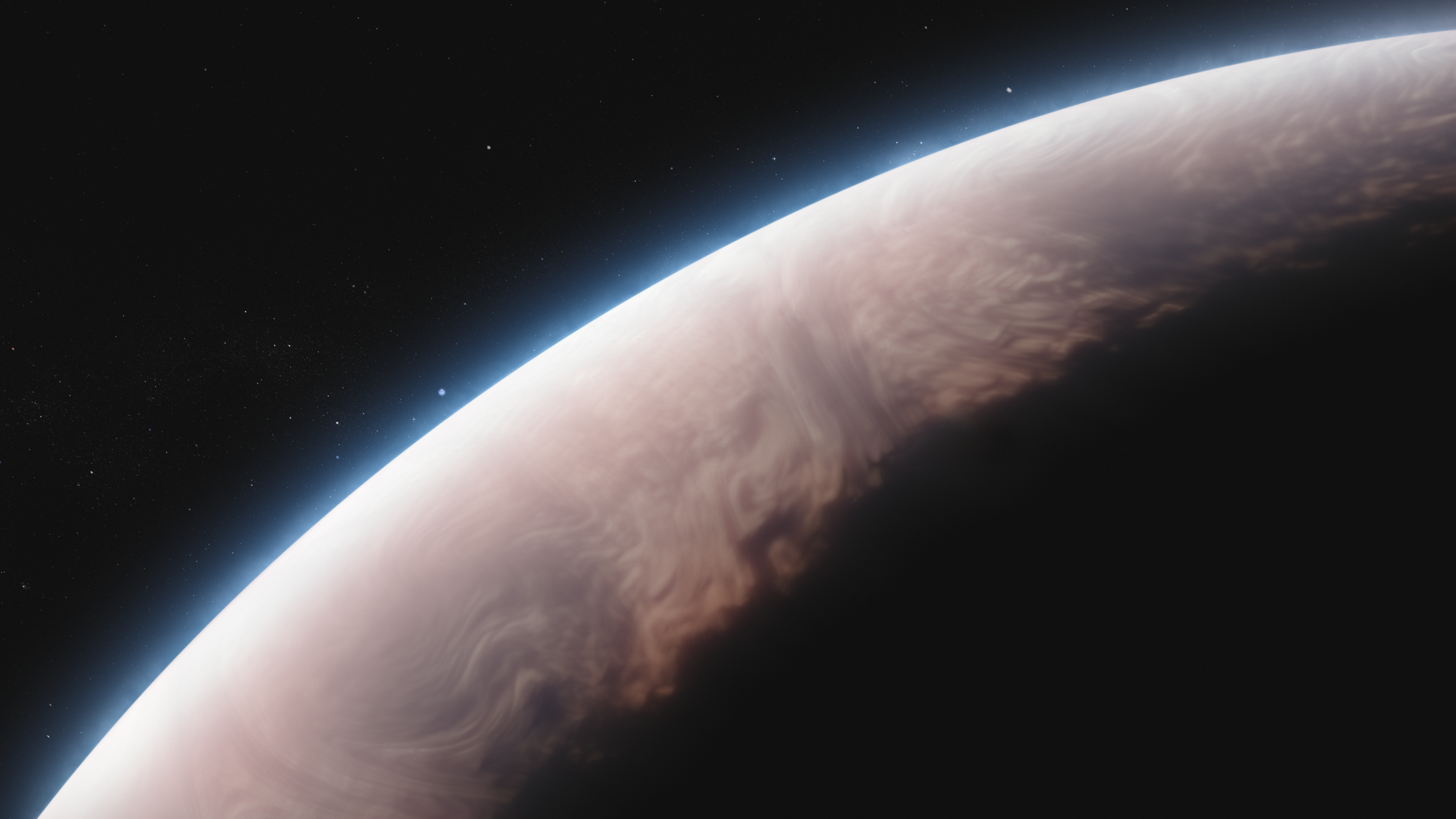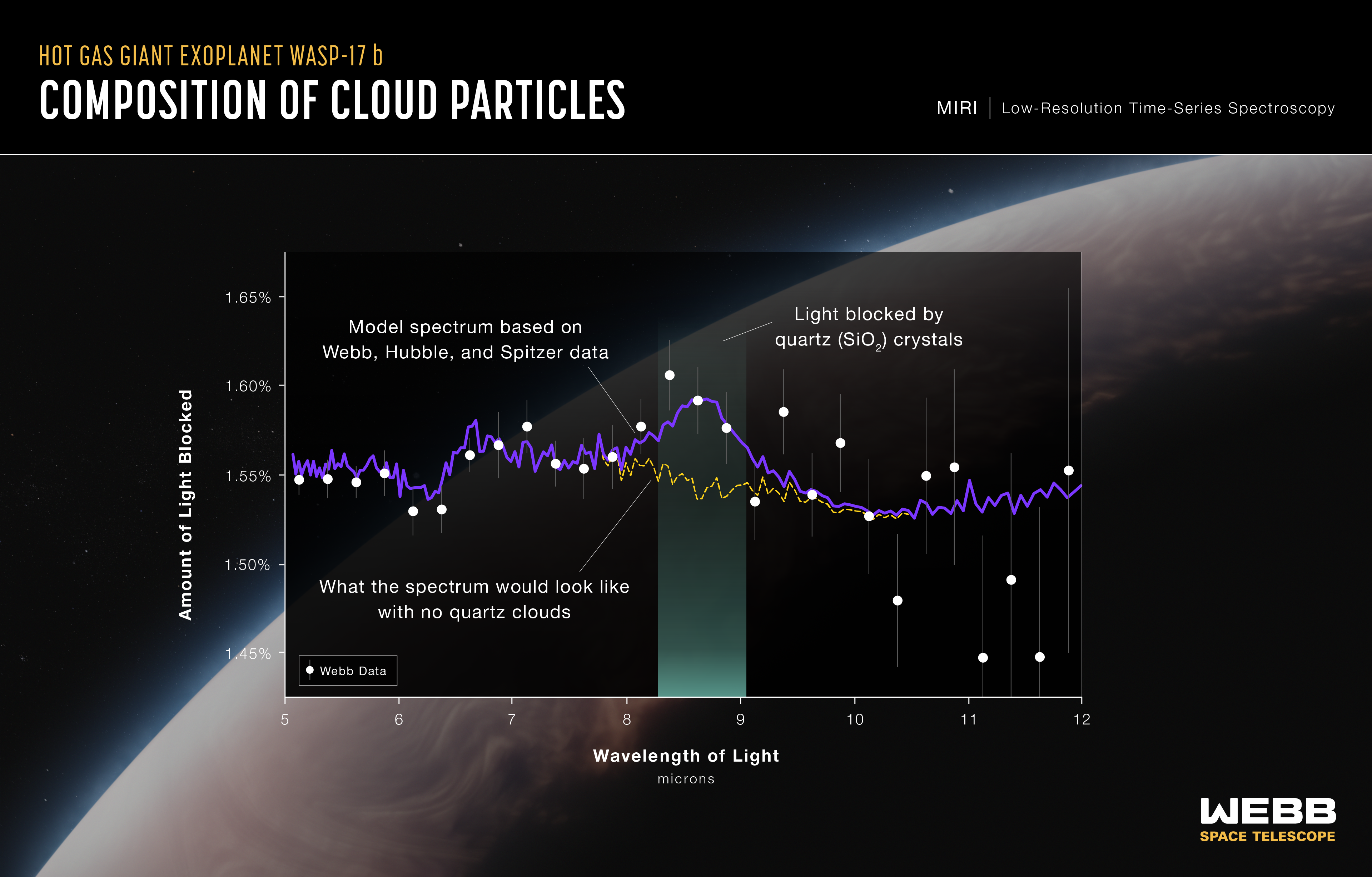1 min read
Exoplanet WASP-17 b (Artist’s Concept)

This artist's concept shows what the exoplanet WASP-17 b could look like.
WASP-17 b, also called Ditsö̀, is a hot gas giant that orbits its star at a distance of just 0.051 AU (about 4.75 million miles, or one-eighth the distance between Mercury and the Sun), completing one full circuit in about 3.7 Earth-days. The system lies within the Milky Way, about 1,300 light-years from Earth, in the constellation Scorpius.
With a volume more than seven times that of Jupiter and a mass less than one-half of Jupiter, WASP-17 b is an extremely puffy planet. Its short orbital period, large size, and thick, extended atmosphere make it ideal for observation using transmission spectroscopy, which involves measuring the effects of the planet’s atmosphere on the starlight filtering through it.
WASP-17 b’s atmosphere is composed primarily of hydrogen and helium, along with small amounts of water vapor and hints of carbon dioxide and other molecules. Observations of 5- to 12-micron infrared light from Webb's MIRI (Mid-Infrared Instrument) show that WASP-17 b’s atmosphere also contains clouds made of nanocrystals of quartz (SiO2).
WASP-17 b is tidally locked and has a retrograde orbit. Its temperature ranges from about 1,000 kelvins (1,350 degrees F or 725 degrees C) on the cooler nightside to nearly 2,000 kelvins (3,150 degrees F or 1,725 degrees C) on the side in permanent daylight.
The star, WASP-17 (also called Diwö), is an F-type star: slightly larger, more massive, hotter, and whiter than the Sun.
This artist’s concept is based on new data gathered by MIRI as well as previous observations from other ground- and space-based telescopes, including NASA’s Hubble and retired Spitzer space telescopes. Webb has not captured any images of the planet.
About the Object
- R.A. PositionR.A. PositionRight ascension – analogous to longitude – is one component of an object's position.15h59m50.94s
- Dec. PositionDec. PositionDeclination – analogous to latitude – is one component of an object's position.-28d03m42.46s
- ConstellationConstellationOne of 88 recognized regions of the celestial sphere in which the object appears.Scorpius
- DistanceDistanceThe physical distance from Earth to the astronomical object. Distances within our solar system are usually measured in Astronomical Units (AU). Distances between stars are usually measured in light-years. Interstellar distances can also be measured in parsecs.1,300 light-years (400 parsecs)
- DimensionsDimensionsThe physical size of the object or the apparent angle it subtends on the sky.Diameter: 1.9 × Jupiter; Mass: 0.48 × Jupiter
About the Data
- Data DescriptionData DescriptionProposal: A description of the observations, their scientific justification, and the links to the data available in the science archive.
Science Team: The astronomers who planned the observations and analyzed the data. "PI" refers to the Principal Investigator.This is an artist's concept based on spectroscopic observations from Webb, Hubble, and Spitzer. There are no direct images of WASP-17 b.
- Object NameObject NameA name or catalog number that astronomers use to identify an astronomical object.WASP-17 b (also called Ditsö̀)
- Object DescriptionObject DescriptionThe type of astronomical object.Hot Jupiter Exoplanet
- Release DateOctober 16, 2023
- Science ReleaseWebb Detects Tiny Quartz Crystals in the Clouds of a Hot Gas Giant
- CreditArtwork: NASA, ESA, CSA, Ralf Crawford (STScI)
Related Images & Videos

Exoplanet WASP-17 b (MIRI Transmission Spectrum)
A transmission spectrum of the hot gas giant exoplanet WASP-17 b captured by MIRI (Webb’s Mid-Infrared Instrument) on March 12-13, 2023, reveals the first evidence for quartz (crystalline silica, SiO 2 ) in the clouds of an exoplanet. The spectrum was made by measuring the...
Share
Details
Laura Betz
NASA’s Goddard Space Flight Center
Greenbelt, Maryland
laura.e.betz@nasa.gov
NASA, ESA, CSA, Ralf Crawford (STScI)






























